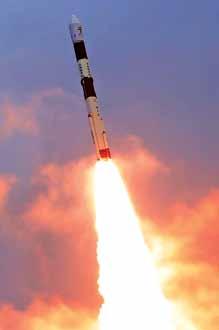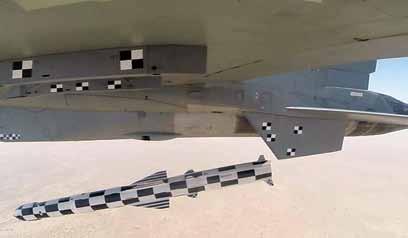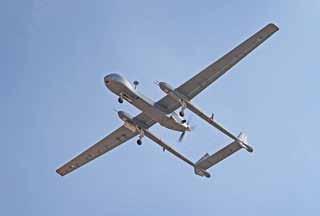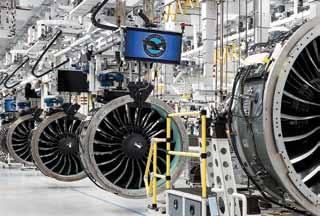
27 minute read
interView aShmita Sethi, preSiDent anD coUntry heaD pratt & whitney
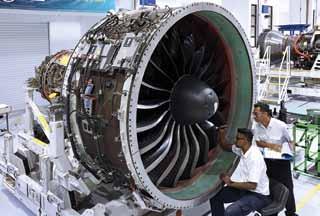
(left)gtfengines; (right) Pratt & whitney eagle serVice asia facility in singaPore
In an interview, Ashmita Sethi, President and Country Head, Pratt & Whitney talks about their MRO services, their initiatives towards cleaner skies and how airlines are benefitting from their GTF technology
SP’s ShowNews (SP’s): How is the progress on GTF technology?
Ashmita Sethi (Sethi): The Pratt & Whitney GTF (geared turbofan) engine leads a new era of commercial jet engines. It is designed with superior architecture and has an unmatched runway for growth.
In fact, India was an early adopter of this revolutionary technology and now more than 180 A320neos for IndiGo and GoAir are powered by the GTF. As of today, the engine family has flown more than 2 million engine flight hours in India and is now delivering an industry leading dispatch reliability of 99.98 per cent.
Across the world, the GTF has delivered on its promised ability to reduce fuel burn and carbon dioxide emissions by up to 20 per cent, reduce nitrogen oxide emissions by 50 per cent compared to the regulatory standard, and to slash noise footprint by 75 per cent. We will continue to advance the engine throughout its lifecycle and deliver efficiency gains that will let our customers fly even farther, with less fuel, well into the future.
SP’s: Can you indicate on the commitments coming from various airlines for this specific technology?
Sethi: The GTF powers more than 900 aircraft for nearly 50 airlines and three aircraft families; namely the Airbus A320neo, Airbus A220 and Embraer E-Jets E2. Since its debut five years ago, these engines have saved more than 400 million gallons of fuel.
With the upgrades complete, these engines are now delivering industryleading reliability of 99.98 per cent for the A320neo family. Combine this with our best-in-class fuel efficiency and low carbon emissions, it’s easy to see why GTFpowered fleets have seen high utilisation as the industry begins to recover after the pandemic.
The GTF has proven itself to be the engine architecture of choice. We are confident it will drive the next generation of efficient, sustainable air travel – allowing airlines to open new routes and fly more people, farther, with less fuel. That’s why with over 10,000 orders and commitments, market demand for the PW1100G-JM engine remains strong.
SP’s: There have been some hitches on this front. What all efforts are being made to offer an absolutely flawless GTF technology to various operators around the world?
Sethi: The geared turbofan is a new architecture engine in its first phase of its deployment cycle. Therefore, it worked up to the high levels of durability and reliability that it now delivers. We incorporated more durable LPTs into the engine fleet and redesigned a seal in the high-pressure compressor. These upgrades have been put into all new production engines and during planned maintenance visits of in-service engines.
In India, we worked closely with airlines to upgrade their engines to the latest configuration and minimised impact to their operations. We also adopted an inventive and agile way of retrofitting the fleet worldwide, investing both on the production side and the maintenance, repair and overhaul (MRO) side. Even during the extended lockdown in 2020, we continued to work closely with airlines to ensure that they were ready for a well-supported return to demand. As we have done for every engine throughout our history, Pratt & Whitney will continually work to improve the reliability and durability of the GTF over its entire lifecycle.
SP’s: Where do you find your engine program’s standing versus the competition in the world?
Sethi: We are the only engine company with geared turbofan technology in service and building on that experience that will put us well ahead of other engine makers. Since its entry into service in 2016, GTF-powered aircraft have accumulated more than 6 million engine flight hours. But what keeps us competitive and significantly ahead is also the additional investments we’re making – across production, MRO and data analytics.
In the first half of 2020, the Pratt & Whitney GTF MRO network expanded to nine facilities, including Delta TechOps in the United States and EME Aero in Poland. Air India Engineering Services Limited (AIESL) was announced as a provider of maintenance services in support of GTF operators in India and the surrounding region. We are looking at this number increasing to 11 facilities in 2021.
We also have a growing suite of data analytics and real-time intelligence offerings that predict and prevent engine disruptions before they occur. Real-time intelligence and analytics allow us to compare individual engines and aircraft to the global fleet, identify trends and issues right away, and service engines more quickly to maintain the highest levels of aircraft availability. The GTF has a long runway for future growth and Pratt & Whitney is ready to deliver what the aviation industry needs next.
SP’s: Can you elaborate more on your MRO services worldwide?
Sethi: Pratt & Whitney has a comprehensive engine repair and overhaul services and support, that is backed by a global state-of-the-art service network of engine OEM-owned and designated facilities. With our continued investment in technology, our facilities and our industry-leading workforce, we are well prepared to meet the need of MRO services worldwide.
Over the last five years, we have significantly grown our global MRO network. An example of this is our global Geared Turbo Fan (GTF) MRO capacity, which has increased 6x since 2017. In the first half of 2020, network expanded to nine facilities, including Delta TechOps in the United States and EME Aero in Poland. In India, Air India Engineering Services Limited (AIESL) was announced as a provider of maintenance services in support of GTF operators in the country and surrounding regions. It is part of the Pratt & Whitney GTF MRO network worldwide and provides maintenance services in support of GTF operators. Previously, such services were conducted only by international MRO hubs.
Additionally, Taj Air’s Mumbai facility maintains Pratt & Whitney’s PW308C engines. We also offer a growing suite of sustainment solutions for engines, for large and small aircraft, that support the Indian Armed Forces’ mission readiness.
SP’s: Given India is talking big for MRO – how can Pratt & Whitney play a major role?
Sethi: With the emphasis on self-sufficiency, it is positive to see the Government’s plan to make India a hub for MRO of aircraft. This will not only strengthen our MRO capacity and capabilities in India, but also and open up future avenues for growth, aligned to the Government’s “Atmanirbhar Bharat” vision.
For over 20 years, AIESL has been performing overhaul services on Pratt & Whitney’s legacy engines such as the JT8D, JT9D, & PW4000. So, our MRO presence in India and our AIESL partnership goes back a long way. So, in 2020, we announced
SPECIAL REPORT
retUrn of tHe kinGS – tHe mUltirole Helicopter Story
CoMModore g. PrAkAsh (retd)
Exactly twenty years ago I solemnly gifted a memento to my ship on behalf of the Officers of my department. The memento was a solid 3 x 1.5 feet carved wooden frame, that surrounded two beautifully painted war elephants. We had carefully selected the two elephants from a stack of elephant paintings the best Rajasthani art dealer on Colaba Causeway had in his stock. Their eyes had to be ferocious and their tusks had to be razor sharp. That is because they were going to represent the best multirole helicopters (MRH) the world had seen then, the Sea King Mark 42Bs, known lovingly as just 42Bs, or Bravos. They were called Flying Frigates. Rightly so, as they could do almost anything the Frigate that carried them could do. With two Bravos each on ship, the Godavari Class were matchless fighting entities.
The occasion was the formal disbanding of the last Bravo Flight on the Godavari class Frigates. The reason was straightforward. In response to India’s bold step at Pokharan in 1998, the US had imposed sanctions and this was likely to affect the operational availability of the 42Bs. Though the Bravos had come to us at that time from UK’s Westland Helicopters Ltd (now Leonardo Helicopters), the basic aircraft was under the license of Sikorsky (a Lockheed Martin company), USA. So, till we could get a clearer picture on the effect of the US sanctions, the Indian Navy was prudently consolidating its assets as per a revised utilisation plan. My crew and I got posted out immediately thereafter.
When the 42Bs arrived in India between 1988 and 1990, they were the second lot of Sea Kings to ever come to India. The first lot of 12 had come in 1970, just before the Indo-Pak war. Equipped with an excellent Sonar and a Radar, they were the most modern ASW helicopters in the world when they arrived. But they came a bit too late and during the 1971 war, could only undertake some shore based operations from Mumbai. But soon after that, the Indian Navy managed to operate these large helicopters from Frigates and even acquired three more helicopters, with slight design changes to better suit operations from small decks. Getting these 10 tonne helicopters to operate from Frigates, was a path breaking innovation.
In the decade after the 1971 war, the Indian Navy carefully charted out options for all round up-gradation of military equipment, and some, much required indigenisation. In the field of multirole helicopters, it was to be a two pronged approach. For indigenisation, HAL was to first make a smaller MRH to develop skills and confidence. A larger one could follow later. Meanwhile, to meet operational needs, some MRH were to be imported. The choice fell again on Sea Kings, as they were still the best available.
But this time around, there was a difference. The aircraft was to be equipped with state of the art Weapons, Sensors, Communication systems, Navigation systems and most importantly, a Tactical Mission System (TMS) to integrate everything so that operating them was humanly possible. The mix was eclectic. Air to
Surface Missiles (British Sea Eagle), Torpedoes (Italian A244S), Depth Charge
Mk 11 (Indian), Radar (British), Dunking Sonar (French), ESM (Italian), Sonobuoy System (British), Tactical Air Navigation System (British), V/UHF (USA),
VHF Homing (UK) & HF (USA) and a British TMS. This was the first time anyone was attempting to integrate this stupendous mix of capabilities into one helicopter. The best part was that this entire architecture was designed by India, to be executed by Westland Helicopters (now Leonardo Helicopters). This complex integration effort was the aviation equivalent of the amazing integration of multi country origin equipment the Indian Navy had achieved with the Godavari Class.
Only those who operated the 42Bs in their prime would know the extreme invincibility we felt. It won’t be too wrong to say that with half a dozen of them flying, the Arabian Sea had shrunk to a pond. Suddenly submarines in the region had a potent enemy and ships of adversaries couldn’t be sure of their safety from incoming missiles. Those making electronic transmissions could be identified and Over The Horizon Targeting as well as long range communications capabilities became virtual game changers. After a decade of this glory, the US sanctions hit. But the Bravos continued to operate. They still do.
It is ironic that the country which attempted to limit our operational capabilities through sanctions, is now poised to send us the third wave of the kings of the sea, the MRH. Earlier this year, India signed a multi billion $ deal with USA for 24 MH-60R helicopters from the Sikorsky (a Lockheed Martin company) family. They are expected to be delivered next year.
Yet again, the Arabian Sea is poised to shrink to a pond, as the MH-60R are the best MRH in the world today. Since they come from a family of helicopters with which the Indian Navy has a familiarity of over 50 years, in their operation and maintenance, we will hit the deck running too.
What does this reveal about India? Someone somewhere had kept steadily chipping away at shaping forei gn policy, ultimately achieving a reversal of relationship unimaginable two decades ago. The arrival of the second set of MRH in the end of the 1980s had been two decades after the arrival of the first batch in 1970. Two decades is the legitimate time period after which such aircraft should be replaced. The third set should have come by 2010. But the complex wheels of geopolitics and global economics delayed this arrival by ten years. India had steadily got stronger too during the period. It was only natural that suitors would flock, attracted by the value of our friendship and money.
Soon after I presented the memento of two painted elephants to my ship, I moved to New Delhi. One day, at the Aviation Directorate, I took a fresh, blue coloured official file cover and wrote MRH on it with a black marker pen. Little did I know at that time, that it will take 20 years for the English I started filling into the file, to manifest as real helicopter. I am glad that the day is almost here. A most critical operational gap is about to be closed. Indian Naval aviation is poised to soar higher.
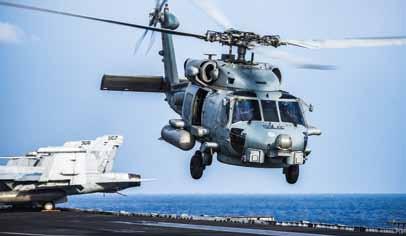
lockheeD Martin Mh-60rsea hawk
Geared tUrbofan...continued from page 15
AIESL as a provider of maintenance services in support of GTF operators in India.
The GTF MRO with AIESL not only brings our engine support closer to our customers in the region, it also supports the government’s vision of developing India as a major regional MRO hub. We also get to leverage India’s skills and add to our advanced and competitive global MRO capabilities.
Just as we continue to increase up our presence in-country when it comes to supply chain, sustainment and research and engineering – we will continue to be a significant driver of India’s MRO success story.
SP’s: Would you like to elaborate on the key initiatives towards cleaner skies?
Sethi: Throughout our 95 year history, we have defined, and redefined, aviation. Now, we’re working towards making environmentally sustainable aviation a reality. We want to enable our customers, and help them deliver cleaner, greener, and more sustainable air travel. In fact, the GTF has already set a new standard for fuel efficiency, as well as reduced emissions and noise footprint.
We continue to closely study novel solutions like hybrid-electric and hydrogen-powered propulsion in aviation and support wider adoption of Sustainable Aviation Fuels (SAFs). Globally, SAFs will be an important “Drop-In” solution that let us reduce carbon footprint while using existing gas turbine technology. The industry remains committed to sustainable growth, and we are committed to delivering for the industry and our customers.
SP’s: R&D plays a very major role for futuristic and evolving technologies. What kind of investments do you make on this front?
Sethi: Innovation remains a key focus for P&W and we continue to channel our vast Research & Development (R&D) resources on advancing next-generation engine technologies. Be it designing engines of the next decade, researching advanced materials and aerodynamics, exploring manufacturing breakthroughs, or using big data and artificial intelligence – there is a lot of work happening globally. In fact, there’s some exciting R&D work on advanced gas turbine technologies and materials, combustion, and mechanical design happening right here in India at our R&D Center of Excellence (COE) at the Indian Institute of Science (IISc), Bengaluru. We’re also engaging the vibrant Indian start-up ecosystem through the RTX Innovation Challenge and exploring disruptive innovations for aerospace.
iai HaS implemented...continued from page 6
radar (MF-STAR or digital MMR), a command and control center, mobile launchers and interceptors and an advanced RF seeker.
SP’s: Do you propose to offer any solutions on the front of MRO? Is it military and civil both? What’s the road map?
Levy: IAI has MRO capabilities since its establishment in both the military and civilian spheres. Beyond this, IAI is Israel’s home of aviation and deals also in aircraft upgrade, maintenance and more. We will be happy to join the MRO world in India, and are examining some possible partnerships.
SP’s: Do you have any offering in the field of space and if so, would you like to elaborate a little?
Levy: IAI, the National Space House of Israel, is a one-stop-shop for cost-effective small to medium size satellites. With about 40 years of experience in space technologies, IAI focuses on space systems for national security, scientific or research satellites and commercial applications: • Observation satellites with different types of payloads (EO and SAR) • Research or scientific satellites, including a moon lander and nanosatellites • Communication satellites • Space platforms • Ground control stations, including services on-demand • Mission and applications centers • A full range of space sub-systems
IAI implements its extensive experience in space technologies, along with a new approach to outer space. Dozens of satellites have been launched successfully and are performing with excellent results, providing services to users in Israel and abroad. IAI works closely with its customers to enable efficient solutions, according to their special needs and budget constraints. IAI is ready to explore further modes of cooperation with potential customers and partners. The company has a proven record in conducting a full space project cycle – starting from definition-of-mission requirements, through design, manufacturing, integration, launch-testing and in-orbit delivery.
IAI and the Israeli MOD have recently successfully launched the “Ofek 16” reconnaissance satellite into space and delivered it the IDF for operational use. “Ofek 16” is an electro-optical reconnaissance satellite with advanced capabilities. Its development was enabled by the experience gained by the defence establishment in the production of earlier satellites in the Ofek series, which have been produced and launched since 1988. The satellite was launched aboard the “Shavit” launcher.
iai to preSent a variety of SyStemS
Israel Aerospace Industries (IAI) will take part in the Aero India 2021 exhibition, slated to take place between February 3-5 in Bengaluru, India. The Company expects to expand its cooperation with local leaders in integrating strategic state-of-the-art systems for the Indian Ministry of Defence in several fields and in accordance with the Indian Gov- iai Mini harPy loitering Munition ernment’s ‘Make in India’ policy. These collaborations are a direct continuation of IAI’s business deals in India which totaled some $5 billion in the past five years.
IAI has been working with India’s defence industries and armed forces for the past 30 years and the strategic cooperation spans many areas. The company works with local companies and with India’s defence agencies, as well as the navy, air force, army and coast guard. Joint development projects include the MRSAM air defence system, in both its maritime and land-based versions; mission aircraft; various radar systems and UAVs. Cooperation agreements are based on the transfer of technology for the benefit of local production as part of the Indian Government’s ’Make in India’ policy.
Boaz Levy, IAI’s President and CEO, said, “IAI sees India as one of our main partners. This valued partnership is characterised by long-term cooperation, joint development and manufacturing, technology transfer and technical support over decades. During the Covid-19 pandemic, IAI continued bilateral work in India, conducted significant trials in strategic systems like the jointly developed MRSAM Air and Missile defence system and our professional crews in Bengaluru and NewDelhi supported all relevant projects such as UAV’s, radars, air defence and more. In addition, we advanced our mutual partnerships with local Indian industries with no interruption, according to ‘Make in India’ policy.”
At the exhibition, IAI will present a wide variety of strategic defence systems with an emphasis on unmanned aerial systems, among them the Heron TP and Thunder B VTOL. In the loitering-munition category, IAI will present the Rampage, Mini Harpy and Rotem L. The company will also display its Multi Mission Tanker Transport (MMTT), which enables air refueling, cargo, VIP, passengers and ISR systems, as desired by the operator. IAI will also present the mission aircraft for intelligence missions, aerial control and naval surveillance on different platforms-ELW 2090.
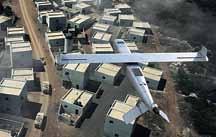
“boeinG believeS...continued from page 10 Unmanned SolUtionS..continued from page 13
Boeing Research & Technology India has delivered commercially viable solutions for Airplane Health Management (AHM) and Air Traffic Management (ATM). Its ATM experts are currently working with the Airports Authority of India to develop a roadmap for air traffic management modernisation in the country. Today, the research center is using artificial intelligence and machine learning to improve the quality of wide-body airplanes that Boeing delivers. Using Internet-of-Things (IoT) technologies, its engineers are finding ways to improve passenger experience during air travel.
We continue to grow a globally competitive supplier base in India, with strong partnerships aligned with the Aatmanirbhar Bharat vision. Our sourcing from India stands at $1 billion per year from 225 suppliers who are manufacturing critical systems and components for some of Boeing’s most advanced products. Our joint venture with Tata, Tata Boeing Aerospace Limited (TBAL), in Hyderabad, is producing aero-structures for Boeing’s Apache helicopter, including fuselages, secondary structures and vertical spar boxes for Indian and global customers, employing over 500 engineers and technicians. Apache fuselages and structures made in this cutting-edge factory in Hyderabad are for not just the Indian Army but for customers around the world, including the US Army. We look forward to seeing the Indian Army’s recently contracted six new Apaches rolling down that production line. The state-of-the-art facility is an example of Boeing’s strategic focus on Make in India and TBAL marks a major step towards the co-development of integrated systems in aerospace and defence in India.
Dynamatic Technologies, another Indian partner, manufactures the ramp and complex aft pylon for Chinook heavy-lift helicopters. Rossell Techsys manufactures wire harness and electrical panel for the AH-64 Apache, and the harness for V-22 Osprey. SASMOS HET Technologies manufactures electrical panel assemblies and wire harness for the F/A-18 Super Hornet and F-15 Strike Eagle. Hindustan Aeronautics Ltd (HAL) manufactures F/A-18 gun bay doors and wire harnesses, and P-8I weapons bay doors and friend-or-foe identification transponders.
In terms of skilling and upskilling, we are developing Indian MSMEs, aircraft maintenance engineers, technicians, and frontline factory workers across India with our industry partners like Tata, Rossell, Jaivel and Lakshmi Machine Works. Our vision is a robust, globally competitive aerospace and defence ecosystem in India.
Sea mines are unremarkable-looking, iron-encased explosives, most often placed under the water’s surface (buoyant mines) or on the seabed (ground mines). There they float or sit silently for years, until a ship or submarine strikes them directly, or produces the right magnetic, acoustic or pressure signal to set them off. The resulting explosion can be every bit as devastating as, say, a missile. In just a four-day period during the first Gulf War in 1991, the US Navy saw the USS Princeton and USS Tripoli put out of action for several months due to the damage caused by Iraqi sea mines.
“A sea mine gives you area denial. They are an inexpensive and highly effective way of waging a maritime campaign,” explains Chris Lade, Engineering and Defence Sales Manager at Saab Seaeye. Before joining Saab, Lade spent 31 years with the British Royal Navy, as a navy diver who actually laid charges to neutralise sea mines, and as a planner during the 2nd Gulf War to clear Iraqi waters for Allied vessels.
“They are used in key waterways, such as the Straits of Hormuz in the Middle East, the Malacca Strait in Indonesia, the Bosporus in Turkey or the Kattegat entrance to the Baltic Sea. If these ‘chokepoints’ are closed off due to mines, they make a big strategic impact at a relatively low cost. Sometimes forces make it look like they have laid mines. The threat alone is enough to disrupt sea lines of communication, affecting trade, logistics and naval patrols,” says Lade, though it contravenes the Hague Convention on mine usage.
Saab’s solution to these problems represents a breakthrough for safer seas. It has been six years in the making, involving a core team of 12 people, including Lade. “The MuMNS can go down and use a camera to identify a target. The beauty of MuMNS is that you have three weapons rather than one, and you have an ROV that has ‘six degrees of freedom’: it can fly upside down, manoeuvre through 360 degrees, and look at a whole range of targets over a large area. It can be left in the water rather than needing to be retrieved by the ship to be rearmed,” says Lade. Add to that its ability to operate from an Unmanned Surface Vessel, a 12-metrelong platform that is remote controlled.
Once the MuMNS charge is attached, a radio receiver floats up to the surface, the charge is then fired remotely from the mother ship on the horizon or beyond. It is essentially taking the man out of the minefield. MuMNS will change the nature of mine warfare around the world and keep a lot of ships and people safe.
SPECIAL STORY
re-forminG tHe Space
With new models, new arms and new approach, Indian space sector is advancing towards tapping the global space economy
Ayushee ChAudhAry
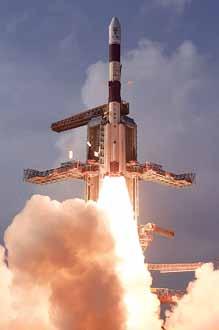
ment or the space agency but also the government, are likely to aid India’s progress Over a half-a-century back, humans stepped on the moon and the space exploration beyond our home planet has only expanded ever since. Space based applications and services have grown in multitude over the years than it was originally anticipated. Many new applications are being developed world wide to meet the growing in developing a competitive space market globally. In an interaction in December 2020 with the space community, Prime Minister Narendra Modi also pointed out the same. “I had a productive interaction with industry leaders, academicians and the start-up community associated with the space sector. India is making remarkable strides in this sector. This sector has also witnessed path-breaking reforms this year,” the Prime Minister had tweeted. user demands and requirements and the activities are only on a growth trajectory ISRO Chairman K. Sivan, Bharti Enterprises Chairman Sunil Bharti Mittal, with huge commercial potential. L&T Senior Executive Vice President for L&T’s defence business Jayant Patil,
More and more countries are now emerging in the space league to study our Agnikul Cosmos founder Srinath Ravichandran, Pawan Kumar Chandana from planet, and other cosmic bodies. India’s space agency, Indian Space Research Skyroot Aerospace Ltd, Colonel H.S. Shankar from Alpha Design Technologies Pvt Organisation (ISRO) has continued to add feathers to its hat with many success- Ltd, Rakesh Verma from MapMyIndia, Awais Ahmed from Pixxel India and Srimaful and over-arching missions often taking the world by awe. As ISRO continues its thy Kesan from Space Kidz India were present during the interaction. advancements, the space sector in India much like globally is also harnessing atten- Adding that developing such market can help replicate the success of the tion and looking for growth to tap into the global space economy. There are also IT industry in India, the Prime Minister said, “Private investment in the (space) many reforms that are taking sector will lead to the creation place in the space sector. Here of hi-tech jobs, which will prowe look at some of those reforms vide a host of opportunities to awaited in the times to come. the talent pool in IITs/NITs and
In India, many Non- other technical institutions.” Government-Private-Entities The reforms in the space (NGPEs) have also started sector will not only ensure the engaging in space activities for ease of doing business, but also commercial gains. Many start- provide necessary mechanisms ups and industries have started in place to help participants at making launch vehicles and each stage, including the availsatellites and are eager to pro- ability of testing facilities and vide space based services. Par- launch pads, Modi said, adding ticipation of NGPEs including that these reforms are to make academic institutions, start- sure that India becomes a comups and industries in end-to- petitive space market and also end space activities is expected that the benefits of the space to expand the space economy. programme reach all.
In order to enhance the dif- In June, India had opened fusion of space technology and up its space sector, to let private boost space economy within firms and startups build satelthe country, the Department lites and rockets, besides offerof Space (DoS) is encourag- ing space services to customers ing the participation of private in the country and across the companies in space activities. world.The government had ISRO shall complement DoS also shifted all operational in its objective of opening up (left) PslV-c49 successfully launches eos-01 anD nine custoMer satellite; assets of ISRO to New Space the space sector to private (right) PslV-c50 successfully launches cMs-01 froMsatish Dhawan sPace centre India Ltd (NSIL), a commercial industries. In this regard, the entity, and formed the Indian following reforms are proposed in the mode of execution of space activities in National Space Promotion and Authorisation Centre (IN-SPACe) as a regulator to the country: ensure a level-playing field for the private sector. At that time Sivan had pointed • In order to enhance utilisation and maximise benefits from the space assets, it out the requirement for navigation policies to make the space sector more accesis proposed to change the approach from “Supply Based Model” to “Demand sible to private players.
Based Model”. NewSpace India Limited (NSIL) will act as the aggregator of user Going further, several ventures had submitted proposals with IN-SPACe requirements and obtain commitments. under the DoS, pertaining to a vast range of activities including satellite constel• NSIL to take ownership from DoS for operational launch vehicles, commer- lation, small satellite launch vehicles, ground station, geospatial services, propulcialise launches, satellites and services. sion systems and application products. • Permit NGPE’s to carry out space activities through an Indian National Space During the interaction the ISRO chairman also briefed the Prime Minister
Promotion and Authorisation Center (IN-SPACe) on various proposals received from the industry for obtaining permission from • ISRO to carry out capacity building in Space domain through development of IN-SPACe and support from the DoS. He informed that over 25 industries have new technologies and capabilities and enable sharing of facilities by NSIL and already approached DOS for undertaking their space activities.
NGPE’s. The first quarter of 2021 is expected to witness the launch of ISRO’s rocket • Announcement of opportunities for NGPE’s offering challenges in new Polar Satellite Launch Vehicle-C51 (PSLV-C51). The primary payload will be the domains of technology. Brazilian satellite called Amazonia, an earth observation satellite. However, the
ISRO had also highlighted the gamut of space activities being considered to be significant highlight is that the rocket will also be carrying the earth observataken up by NGPEs, including: tion satellite Anand, an advanced earth observation satellite, which has been • Production of components and subsystems of a launch vehicle, launch vehicle made by the Indian startup called Pixxel (Incorporated as Syzygy Space Techintegration and testing which is meant for space launch nologies Pvt Ltd). The Bengaluru-based private space technology company • Production of components of a spacecraft, spacecraft Integration and testing plans to have its constellation of 30 small earth observation satellites up in the for the purpose of space launch. sky by the end of 2022. • Space launch of spacecraft on board a launch vehicle and establishment/ The reforms ahead are aimed at standardising as well as enhancing the space operation of launch infrastructure. sector missions as well as manufacturing to become a hub for the world especially • Providing space based services including operation, control and station keep- as more and more countries are entering the space sector and looking for lowing of spacecraft by establishing and operation of ground segment/ stations. cost launch vehicles. While indigenous production will certainly hail advantages • Development of space based applications using satellite data and rolling out of for India but if we can manufacture and export these especially to the countries commercial services. who don’t have the manufacturing infrastructure, there is a significant growth and
These reforms, that are being considered and explored not just by the depart- development possibility that awaits.
